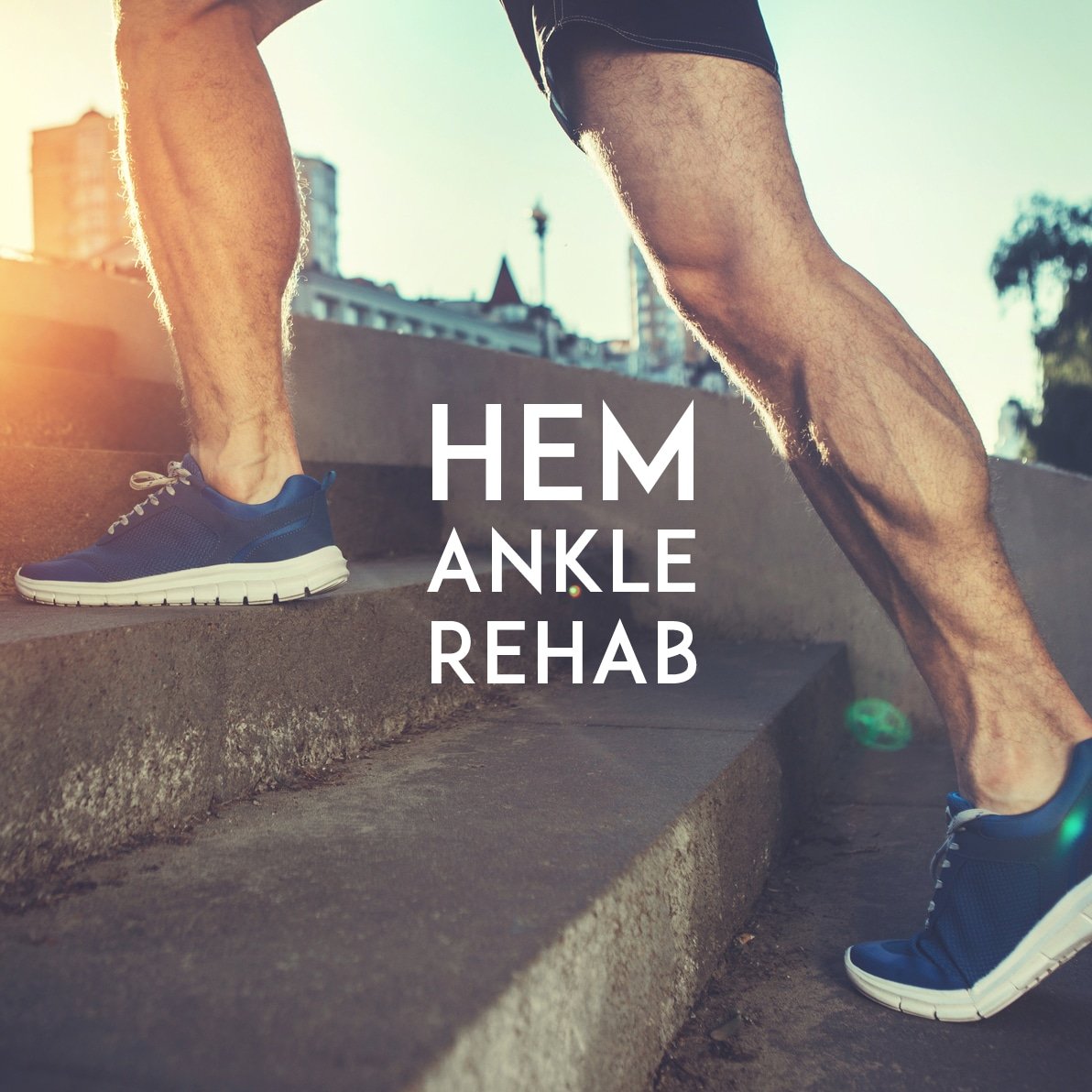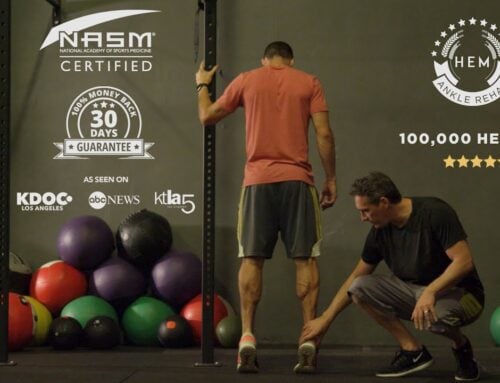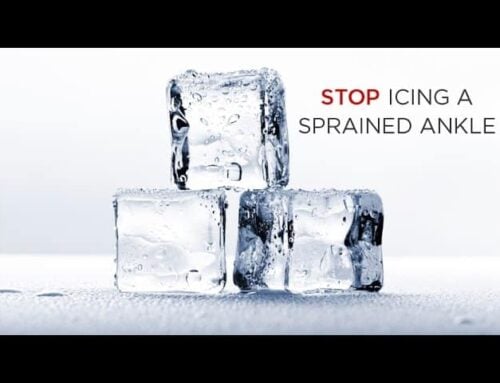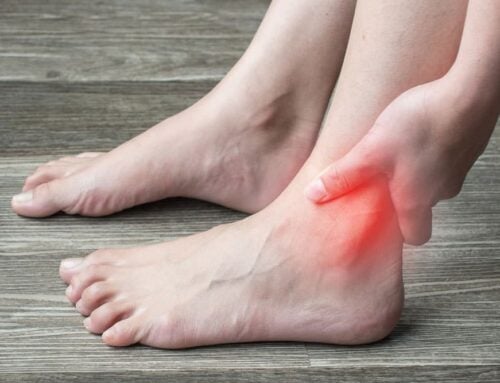
Recovering from an ankle sprain can be a challenging journey, but with the right rehabilitation exercises, full recovery is within reach. Ankle sprains are a common injury, often requiring a structured treatment plan to restore ankle strength, mobility, and stability. This article will guide you through the various aspects of ankle sprain rehabilitation, helping you understand the injury, its causes, and the exercises necessary for effective healing. Whether you’re dealing with a mild sprain or a severe sprain, the goal is to reduce pain and prevent future injuries.
Understanding Ankle Sprains
What is an Ankle Sprain?
An ankle sprain occurs when the ligaments that support the ankle joint are stretched beyond their normal range of motion, leading to tears. These ligaments are crucial for maintaining ankle stability, and when injured, they can cause significant pain and swelling. Ankle sprains are classified based on the severity of the ligament damage, ranging from mild to severe. Effective rehabilitation involves several steps:
- Engaging in physical therapy to promote healing and restore movement.
- Performing strengthening exercises to ensure the injured ankle regains its full function and stability.
Types of Ankle Sprains
There are several types of ankle sprains, with the most common being the lateral ankle sprain. This occurs when the foot rolls inward, causing damage to the lateral ligaments. Chronic ankle instability can develop if the initial injury is not properly addressed, leading to a higher risk of future sprains. Another type is the medial sprain, although it is less common. Understanding the type of sprain is crucial for tailoring a rehabilitation plan that includes appropriate balance exercises and manual therapy to enhance recovery.
Common Causes of Sprained Ankles
Sprained ankles often occur due to sudden or awkward movements that cause the foot and ankle to twist unnaturally. Activities that involve running, jumping, or quick changes in direction can place stress on the ankle ligaments, leading to an injury. Uneven surfaces or improper footwear can exacerbate the risk. Preventive measures, such as wearing an ankle brace or engaging in ankle strengthening exercises, can significantly reduce the likelihood of an ankle sprain. Proper warm-up routines and range of motion exercises are also vital in maintaining ankle health and preventing future injuries.
The Importance of Rehabilitation
Why Rehabilitation is Crucial for Ankle Recovery
Rehabilitation plays a vital role in the recovery process of a sprained ankle. It is essential to restore the ankle joint’s full range of motion and strength to prevent chronic ankle instability. This process involves a combination of physical therapy and strengthening exercises aimed at enhancing ankle stability and mobility. Engaging in tailored rehabilitation exercises helps reduce pain and swelling, accelerates recovery time, and significantly minimizes the risk of future ankle injuries. The structured approach ensures that the injured ankle regains its pre-injury functionality, allowing individuals to return to sport or daily activities with confidence.
Advantages of an at Home Ankle Sprain Program
An at-home ankle sprain rehabilitation program offers numerous advantages for individuals looking to regain their ankle strength and stability. It provides the flexibility to perform exercises at a convenient time and pace, promoting consistency in the rehabilitation routine. This approach often includes a variety of exercises which can be easily performed without specialized equipment. Moreover, an at-home program encourages self-management and empowers individuals to actively participate in their recovery, reducing dependency on regular visits to a physical therapist. This can lead to a more efficient and personalized treatment plan, fostering a quicker return to normal activities.
How HEM Ankle Rehab Works
HEM Ankle Rehab is a comprehensive rehabilitation program designed to facilitate the recovery of a sprained ankle through a structured series of exercises and techniques. It focuses on enhancing the range of motion, strengthening the ankle ligaments, and improving overall ankle movement. The program includes a combination of manual therapy, strengthening exercises, and balance exercises to ensure optimal recovery. By addressing both the physical and functional aspects of the injured ankle, HEM Ankle Rehab aims to restore full ankle mobility, reduce pain, and prevent future injuries. This holistic approach not only aids in a speedy recovery but also in maintaining long-term ankle health and stability.
Best Exercises for Ankle Recovery
Strengthening Exercises for Ankle Ligaments
Strengthening exercises are essential for reinforcing the ankle ligaments, particularly after a sprain. These exercises aim to rebuild the support structures surrounding the ankle joint, crucial for maintaining stability. Exercises such as ankle dorsiflexion and calf raises increase strength in the foot and ankle, helping to support the injured ankle during the recovery process. Incorporating resistance bands can further challenge the ligaments, promoting resilience against future injuries. By focusing on these strengthening exercises, individuals can expedite their recovery time and ensure the ankle regains its full capacity.
Stretching Exercises for Enhanced Flexibility
Stretching exercises play a pivotal role in enhancing the flexibility of the ankle joint, which is crucial for a full recovery. These exercises help improve the range of motion, allowing the foot and ankle to move freely without restriction. Techniques such as ankle circles and heel cord stretches target the muscles and soft tissues around the ankle, reducing tension and promoting mobility. Consistent stretching not only aids in the rehabilitation of a sprained ankle but also prevents stiffness and enhances the overall function of the ankle, preparing it for a return to sport or daily activities.
Balance Exercises to Prevent Future Injuries
Balance exercises are integral in preventing future ankle injuries by improving proprioception and ankle stability. These exercises challenge the body’s ability to maintain balance, which is often compromised after an ankle sprain. Simple activities like standing on one foot or using a balance board can significantly enhance the stability of the lateral ankle, reducing the risk of chronic ankle instability. By incorporating these balance exercises into a regular rehabilitation routine, individuals can strengthen their ankle ligaments and improve their ability to react to unexpected movements, thus preventing future sprains.
Managing Pain During Rehabilitation
Effective Pain Management Strategies
Managing pain during rehabilitation is crucial for maintaining motivation and progress. Effective pain management strategies include a combination of rest, ice, and compression techniques to reduce pain and swelling. Physical therapy plays a vital role in alleviating discomfort through manual therapy and tailored exercises that promote healing. Pain relief methods, such as elevation and over-the-counter anti-inflammatory medications, can also be beneficial. By effectively managing pain, individuals can focus on rehabilitation exercises without hindrance, facilitating a smoother recovery process and a quicker return to normal activities.
Physical Activities to Avoid During Recovery
During the recovery process, it is important to avoid activities that may exacerbate ankle injuries. High-impact sports, running on uneven surfaces, and movements that place excessive strain on the ankle joint should be minimized. Such activities can hinder the healing of a sprained ankle, potentially leading to a severe sprain or chronic ankle issues. It is advisable to wear an ankle brace to provide additional support and stability during activities. By steering clear of these activities, individuals can protect their injured ankle, ensuring a safer and more efficient rehabilitation journey.
Long-Term Care and Prevention
Preventing Future Ankle Injuries with Rehab
Preventing future ankle injuries requires a comprehensive rehabilitation plan that focuses on strengthening the ankle ligaments and improving overall ankle stability. By incorporating targeted strengthening exercises and balance exercises, individuals can significantly enhance their ankle strength and reduce the risk of recurring injuries. Physical therapy plays a critical role in this process, offering guidance on proper techniques and exercises that promote long-term ankle health. Regularly engaging in ankle dorsiflexion and ankle circles can maintain the range of motion and prepare the ankle for the demands of daily activities and sports, ensuring a full recovery.
Maintaining Ankle Mobility and Strength
Maintaining ankle mobility and strength is essential for preventing chronic ankle issues and promoting overall joint health. Regular stretching and strengthening exercises can preserve the flexibility of the ankle joint, facilitating a smoother recovery process. These exercises should be a permanent part of your routine, focusing on both the foot and ankle to maintain stability and function. Techniques such as manual therapy can assist in maintaining the full range of motion, while strengthening exercises, including calf raises, can reinforce the muscles and ligaments, ensuring that the ankle remains resilient against future sprains.
Recognizing Signs of Chronic Ankle Instability
Chronic ankle instability is a condition that can develop from repeated sprains or inadequate rehabilitation. Recognizing the signs is crucial for seeking timely intervention. Symptoms may include persistent ankle pain, swelling, and a sensation of the ankle giving way during movement. Engaging with a physical therapist can provide a tailored treatment plan to address these issues. Through targeted rehabilitation exercises and balance training, individuals can improve their ankle stability and reduce pain, minimizing the risk of future injuries. Early recognition and intervention are key to preventing a severe sprain and ensuring long-term ankle health.
At Home Ankle Rehab
Start Sooner than Later
Initiating at-home ankle rehab as soon as possible is crucial for a swift recovery. Early intervention helps in reducing pain and swelling, promoting a quicker return to normal activities. Starting with simple range of motion exercises and gradually progressing to more challenging strengthening exercises can enhance the recovery process. Implementing ankle circles and ankle dorsiflexion early on supports the healing of the injured ankle. By addressing the injury promptly, individuals can maintain ankle mobility and stability, reducing the likelihood of chronic ankle instability and ensuring a full recovery.
Why HEM Ankle Rehab is Best
HEM Ankle Rehab is considered one of the best approaches for at-home rehabilitation due to its comprehensive nature. It combines various techniques, including manual therapy and balance exercises, to address all aspects of ankle recovery. This program focuses on enhancing ankle movement, strengthening the ankle ligaments, and restoring the range of motion. By following this structured plan, individuals can achieve optimal ankle strength and stability, significantly reducing the risk of future injuries. The HEM program empowers individuals to take control of their rehabilitation, fostering a more efficient and effective recovery process.
Managing Sprained Ankles at Home with HEM Ankle Rehab
When dealing with a sprained ankle, the HEM Ankle Rehab method offers an effective home treatment option. This approach focuses on reducing swelling and promoting healing through exercises and movements that improve the range of motion. The HEM method emphasizes rest, ice, compression, and elevation, which are crucial to alleviate pain and swelling. This self-managed regimen can help speed up recovery and restore mobility.
Secret of the Pros
Everything You Need To Heal At Home
So, Why Rehab?
Most people think rest and ice will heal their ankle (even a severe sprain), but they end up with chronic ankle instability… 30% still have pain one year later!
And that causes all kinds of muscle imbalances in the body, which can lead more serious injuries, repeated ankle sprains and chronic ankle pain. It’s a terrible domino effect that can last for life.
That’s Where Rehab Comes In.
A great rehab program significantly improves how a sprained ankle heals. It eliminates pain fast and ensures your ankles are strong and stable with healthy range of motion, which helps prevent future sprains.
Rehab Is The Key To
Healing Ankle Injuries Fast
Recent studies have shown that rehab heals ankle ligaments safely and effectively. It’s the difference between the people that don’t heal a sprained ankle and the ones that do!
Injured Ankle
Without Rehab
Injured Ankle
With Rehab
HEM Ankle Rehab “Rehabs” Your Ankle

HEM is a complete ankle rehab and prehab program for the entire ankle, foot and calf complex. This is a very thorough program that contains so much more than anything else you can find online, but it’s still easy to do.
Scott will coach you through every step, as if you are with him, one on one. Just follow along with the videos to rebuild your ankle from the ground up.
You can expect pain free mobility and strong, stable ankles that are protected from an ankle sprain, without ankle braces!
REAL PEOPLE, REAL RESULTS
From Scott Malin, NASM-CPT, CES
Creator, HEM Ankle Rehab
October 24, 2025
Fifteen years ago, I had to give up what I love doing most… playing basketball. I sprained my ankles so many times that I could no longer play. It was devastating.
Like you, I used R.I.C.E. (rest, ice elevation, compression), but my ankles healed so slowly and badly, they eventually got so weak, I would sprain them just walking down the street!
Being a fitness trainer, the only thing I had going for me was a fascination with helping people get out of pain and strengthening their bodies.
So, I decided to research all the cutting edge techniques to heal an ankle sprain much faster and better than R.I.C.E.
After months of research, I discovered that icing an injury can have a negative affect on the body’s healing process. Studies show that ice can actually slow down healing and too much rest left the ankles weak and unstable. This was shocking, but only part of the story…
New research was suggesting a much more proactive approach to healing that involved much better rehab techniques proven to dramatically speed up the speed and quality of the healing process.
Instead of months, healing took only days. And, if you had a chronically weak ankle that was in pain, these techniques would quickly strengthen and stabilize the ankles.
I kept improving on these techniques, drawing from many different disciplines and simplified them.
Eventually, after many more months of trial and error, I created a simple at-home healing system with very reliable results.
Since I was a fitness trainer, I was able to help all my clients (celebrities and athletes) whenever they got injured. I was even on the news a few times.
The response from my clients and friends was so overwhelming that a few of them eventually convinced me to share it with everyone.
Today, I am humbled that over 100,000 people have healed fully and fast with my program.
So, if you have any kind of ankle injury (new or old), just follow along with me in the videos and I’ll show you exactly what to do until you are completely pain free.
My message is simple… you do not have to give up what you love. And you do not have to live with chronic pain from old injuries. Life is too short and there is a better way!
I truly hope you will start using my program so you can get your life back and do what you love, pain free (and yes, I still play basketball every week and LOVE it!)
Thank you!
Scott
Heal Your Ankle FAST ⇣

30 day money back guarantee
15 YEARS. 100K HEALED.

Secret of the Pros
Everything You Need To Heal At Home
REAL PEOPLE,
REAL RESULTS
So, Why Rehab?
Most people think rest and ice will heal their ankle (even a severe sprain), but they end up with chronic ankle instability… 30% still have pain one year later!
And that causes all kinds of muscle imbalances in the body, which can lead more serious injuries, repeated ankle sprains and chronic ankle pain. It’s a terrible domino effect that can last for life.
That’s Where Rehab Comes In.
A great rehab program significantly improves how a sprained ankle heals. It eliminates pain fast and ensures your ankles are strong and stable with healthy range of motion, which helps prevent future sprains.

Rehab Is The Key To
Healing Ankle Injuries Fast
Recent studies have shown that rehab heals ankle ligaments safely and effectively. It’s the difference between the people that don’t heal a sprained ankle and the ones that do!
Injured Ankle
Without Rehab
Injured Ankle
With Rehab
HEM Ankle Rehab
“Rehabs” Your Ankle

HEM is a complete ankle rehab and prehab program for the entire ankle, foot and calf complex. This is a very thorough program that contains so much more than anything else you can find online, but it’s still easy to do.
Scott will coach you through every step, as if you are with him, one on one. Just follow along with the videos to rebuild your ankle from the ground up.
You can expect pain free mobility and strong, stable ankles that are protected from an ankle sprain, without ankle braces!
100,000 PEOPLE HEALED-
-
-
-
-
-
-
-
-
-
-
-
-
-
-
-
-
-
From Scott Malin, NASM-CPT, CES
Creator, HEM Ankle Rehab
October 24, 2025
Fifteen years ago, I had to give up what I love doing most… playing basketball. I sprained my ankles so many times that I could no longer play. It was devastating.
Like you, I used R.I.C.E. (rest, ice elevation, compression), but my ankles healed so slowly and badly, they eventually got so weak, I would sprain them just walking down the street!
Being a fitness trainer, the only thing I had going for me was a fascination with helping people get out of pain and strengthening their bodies.
So, I decided to research all the cutting edge techniques to heal an ankle sprain much faster and better than R.I.C.E.
After months of research, I discovered that icing an injury can have a negative affect on the body’s healing process. Studies show that ice can actually slow down healing and too much rest left the ankles weak and unstable. This was shocking, but only part of the story…
New research was suggesting a much more proactive approach to healing that involved much better rehab techniques proven to dramatically speed up the speed and quality of the healing process.
Instead of months, healing took only days. And, if you had a chronically weak ankle that was in pain, these techniques would quickly strengthen and stabilize the ankles.
I kept improving on these techniques, drawing from many different disciplines and simplified them.
Eventually, after many more months of trial and error, I created a simple at-home healing system with very reliable results.
Since I was a fitness trainer, I was able to help all my clients (celebrities and athletes) whenever they got injured. I was even on the news a few times.
The response from my clients and friends was so overwhelming that a few of them eventually convinced me to share it with everyone.
Today, I am humbled that over 100,000 people have healed fully and fast with my program.
So, if you have any kind of ankle injury (new or old), just follow along with me in the videos and I’ll show you exactly what to do until you are completely pain free.
My message is simple… you do not have to give up what you love. And you do not have to live with chronic pain from old injuries. Life is too short and there is a better way!
I truly hope you will start using my program so you can get your life back and do what you love, pain free (and yes, I still play basketball every week and LOVE it!)
Thank you!
Scott
Hurry, sale ends soon!
30 day money back guarantee



























